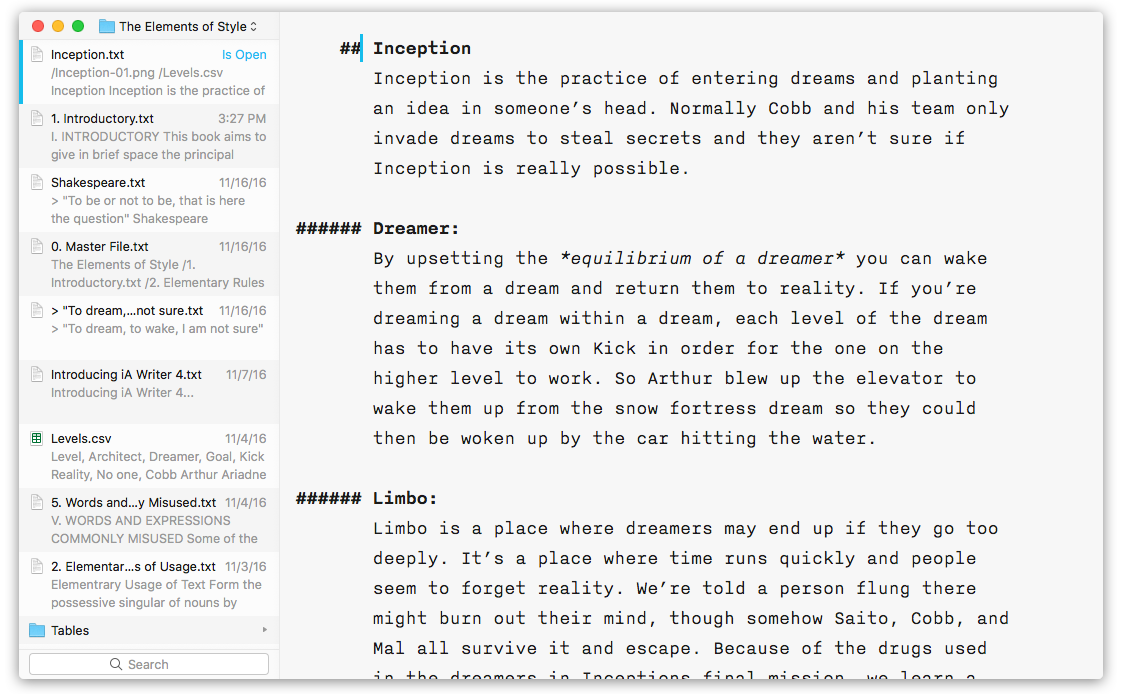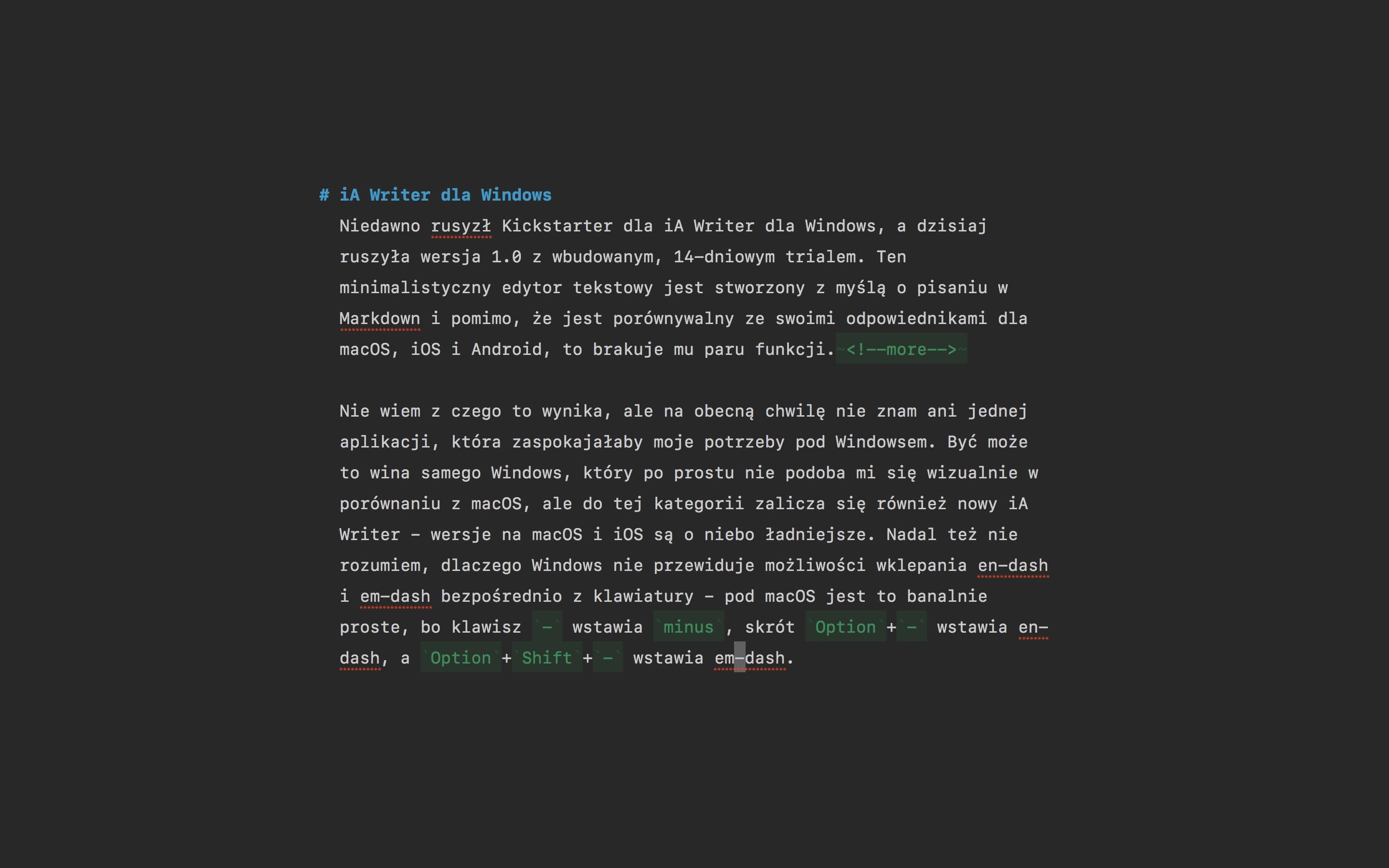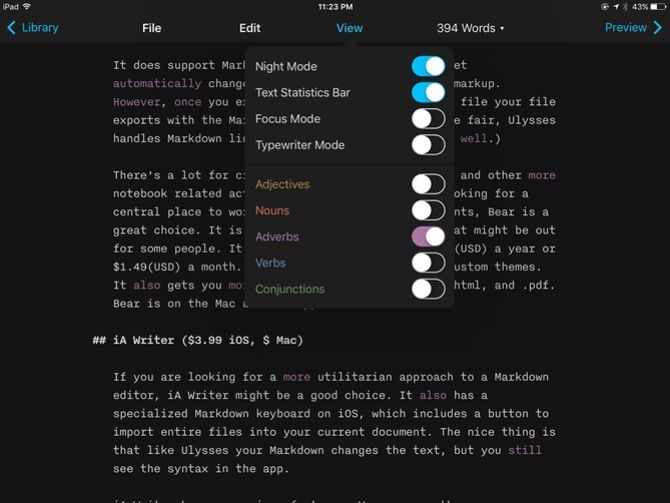

That makes Spark feel a little out of place on a Desktop with other multi-pane apps open. Users that like vibrancy don’t have a choice with Spark, where it isn’t used in the app’s far left pane at all. I know many people who don’t like the effect, but it can be turned off in Display settings in the Accessibility section of System Preferences.
#Ia writer ulysses windows
Like Mail, both apps take a three-pane approach with accounts and folders listed in the left pane, a list of messages in the middle pane, and a message pane on the right.Īirmail follows Apple’s lead by applying vibrancy to the left-hand pane, which lets the colors of windows and the Desktop behind Airmail shine through. Of the two email clients I’ve tried that have a Dark Mode, Airmail’s implementation is closer to what Apple described at WWDC. If I’m in Dark Mode, I don’t want to write messages against a glaringly bright compose window. Both Airmail and Spark adopt a dark-only compose window, and I can’t say I blame them. What’s interesting about Apple’s approach to the message compose window is that I’m unaware of any third-party developer that has followed suit. Apple’s Notes app takes the same approach. By default, the background of Mail’s compose window is dark gray, but it can be changed to white in Mail’s Preferences. Mail is an excellent example of the third option. There are many other good examples, but email clients, task managers, text editors, and note-taking apps are categories that best illustrate how Dark Mode is being used by the first wave of developers to put the feature into practice.

In the sea of dark gray floating before my eyes, I’ve identified a handful of app categories that illustrate some of the subtle differences between the apps I’ve tried. It’s also useful to consider how these variations will impact the experiences users have with these apps. I’ve spent time with many of them and have begun to see some design and implementation patterns among the early adopters that are interesting to compare to similar system apps by Apple. Since then, many other apps have been updated.
#Ia writer ulysses update
In my Mojave review, I collected some representative examples of apps that were ready with Dark Mode implementations when the OS update shipped. Sometimes, however, developers intentionally ignore Apple’s recommendations, choosing to take a different path. Other differences reflect compromises that are necessary to adapt existing designs to Dark Mode. Part of the variety you find is driven by the particular needs of each app. Some apps are easier to adapt to Dark Mode than others from a technical standpoint, but beyond the coding, developers have to grapple with many design issues that affect apps differently.Īs with many new features Apple introduces, there’s the way the company would like to see Dark Mode implemented and then there’s the way third-party developers use it in practice.

There were two sessions at WWDC dedicated to Dark Mode. As I noted in my review of macOS Mojave, there’s a lot more going on with Dark Mode than dark gray window chrome.


 0 kommentar(er)
0 kommentar(er)
